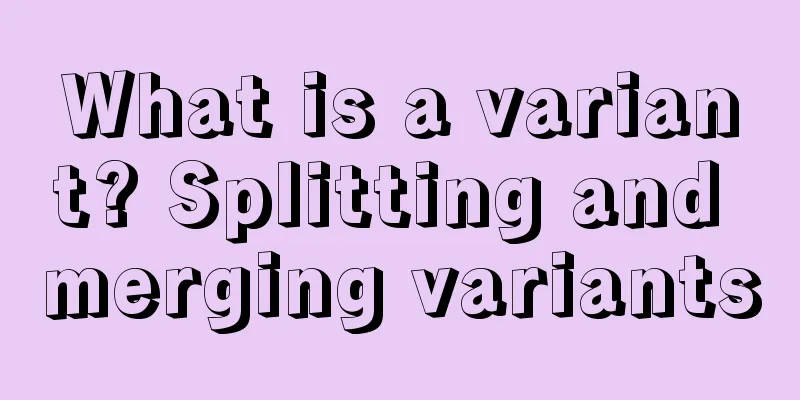Collection! Amazon sellers must know the product image details! What kind of pictures can get high conversion rates?

|
Did you know that Amazon product images are the number one selling point of your product? Flat product images are no longer enough to generate sales. You can think of Amazon listing images as fishing. Once a buyer is interested, your job is to lure, hook, and “buy” them. Using the right combination and sequence of images is the skill required for successful conversion rates. To unlock the maximum potential of your product listing, follow this image order. Ideal image order for Amazon listings1. Main image Start by showing what your product will look like with the platform’s required white background image. This image will help buyers know exactly what they are looking at. Following the main image, the combination of attractive infographics will help buyers scan for relevant information and pique their interest. 2. Infographic A The second image will address the buyer’s main question. Is this a special product or a new product? What key features do you need to highlight to provide the foundation? 3. Infographic B The third image should show what’s included in the product. Knowing exactly what buyers will get when they purchase it will help them make a better and faster decision. 4. Infographic C Since buyers need to reference the dimensions of the product, adding infographics with accurate dimensions is necessary to ensure they make the right purchasing decision. 5-6. Lifestyle Chart The fifth and sixth images should directly induce the buyer’s imagination, showing them a lifestyle image that gives them a sense of what it’s like to use the product. Show the best scenario in which the product can be used. Nike uses a similar technique in their ads, where they focus on athletes climbing mountains or running on a track, making the buyer subconsciously feel like an athlete when wearing Nike products. 7. Comparison chart Finally, seal the deal with a comparison chart or before-and-after graphic so buyers can understand how this product solves a problem in their life and what makes your product different from other competitors. How to conduct A/B split testing? What metrics should you track?Split testing will help you determine which main image drives the most clicks, and which combination of images will help you get the best conversions. The concept behind A/B split testing is to compare different versions of the same listing with the help of a controlled experiment. By running this simulation, you can test a change in a specific variable to assess its impact on improving your metrics. So, what metrics provide insights into image performance? What are the benefits of tracking these metrics? Click-through rate (CTR): The percentage of product page visitors who display the listing in the search results. The good thing is that if the main image is eye-catching, the click-through rate will be high. Buy Button Page View Rate (USP): The percentage of buyers who visited the listing page. The benefit is that it tells us whether the images are good at generating an emotional response. There are a variety of websites and testing software out there that you can use to split test your main image or image combinations. These split testing tools will compare two image combinations and ultimately determine which images actual people respond to the most. What should you do if Amazon deletes your listing because the image does not meet the requirements?To ensure that everyone follows these guidelines, Amazon will randomly remove images that do not meet the requirements and issue a warning. Due to this unpredictable policy, there is no guarantee which listing will be removed in the event of a rule violation. The best approach is to avoid anything that conflicts with the Terms of Service. Otherwise, Amazon will be forced to take drastic action. If just one image does not meet the requirements, Amazon will usually just remove that image. This can be fixed by replacing the image. However, if all images do not meet the requirements, Amazon will ban the listing and the seller will be required to make changes to the images before continuing. Once the required changes are made, Amazon will reinstate the listing. Typical image violations that lead to a banned listing include: ● Logo or text appears in the main image; False or misleading claims, particularly about health and beauty products; ●Add products that are not included in the product portfolio. To fix a suppressed listing, visit Seller Central, hover over “Inventory” and scroll down to “Manage Inventory.” If a listing is currently suppressed, you will see a “Suppressed” warning. Follow the “Suppressed” option and open the product listing. Take your time to carefully observe which mistakes you have made and correct them accordingly. You can click on “Manage Images” to fix the product images. Go through the Amazon Product Summary page of the listing, which will help you point out all the violations. Once you have fixed the issues, click on “Save and Finish” to save your progress. |
<<: How can Amazon sellers create a high-quality review?
>>: Practical information! A super detailed analysis of US overseas warehouses
Recommend
What is Udaan? Udaan Review
Udaan, an Indian B2B e-commerce platform, was foun...
What is Qianmo e-commerce logistics? Qianmo e-commerce logistics review
Shenzhen Qianmo International Freight Forwarding C...
What is Central Group? Central Group Review
Central Group is a Thai department store chain tha...
What is Guotong Cross-border? Guotong Cross-border Review
Guotong Cross-border is China's leading one-st...
What is Guangzhou Shuangzhu? Guangzhou Shuangzhu Review
Guangzhou Shuangzhu Technology Co., Ltd. (formerly...
What is Ezbuy? Ezbuy Review
Ezbuy is a full-category shopping platform for the...
Breaking news! The shopping cart acquisition rate of a large number of sellers has plummeted to 40%
On the first day after Prime Day, however, when al...
Unexpectedly, the number of Chinese mask manufacturers authorized by the FDA dropped sharply from 87 to 14
At present, 1,291,719 people have been diagnosed i...
What challenges may Shein face as it steps up its efforts to become a third-party platform in the United States?
It is learned that after industry insiders reveale...
Amazon reveals new “black technology”? Free reviews and BSR tags for new products!
Since the beginning of this year, Amazon has not b...
What is Alza? Alza Review
Alza was founded in 1994 and is currently the larg...
15 Ways to Catch Copycats and Change Commissions on Amazon
The commission change is currently applicable to ...
Amazon really gave out money! Some sellers made 540,000 yuan in advertising fees...
Normal, once there is data abnormality, such as s...
What is Profit Bandit? Profit Bandit Review
Profit Bandit is a product research tool that work...









